There’s an old saying about corn — “Knee-high by the Fourth of July” — whose wisdom is if your crop stands knee-high around the holiday, you’ll have a good yield that year. That was probably true about two generations ago, when farmers used the catchy phrase to gauge their crop, but nowadays corn can be waist-high or even head-high by the Fourth of July, thanks to earlier planting and advances in farming.
In my case, where I’m growing corn in climate zone 10b, I sowed my first seed in early April, had tassels the middle of June, and harvested my entire crop after all the fireworks settled down in July.
In fact, on the Fourth of July my Golden Bantam 12-Row sweet corn stood 10 feet tall!

Golden Bantam 12-Row is a sweet corn variety developed from the original Golden Bantam, an old-time favorite introduced by Burpee in 1902. Its bright yellow kernels changed the way people thought about sweet corn, as at the time, the preference was toward white corn (signifying quality and refinement) while yellow corn was fit for animal feed.
But people took a liking to the Golden Bantam as it tolerated cooler conditions better than other corn of the time, making for an earlier planting and earlier harvest.
The 12-row variety improved on the original in 1922 with taller stalks, larger ears, and higher yields.
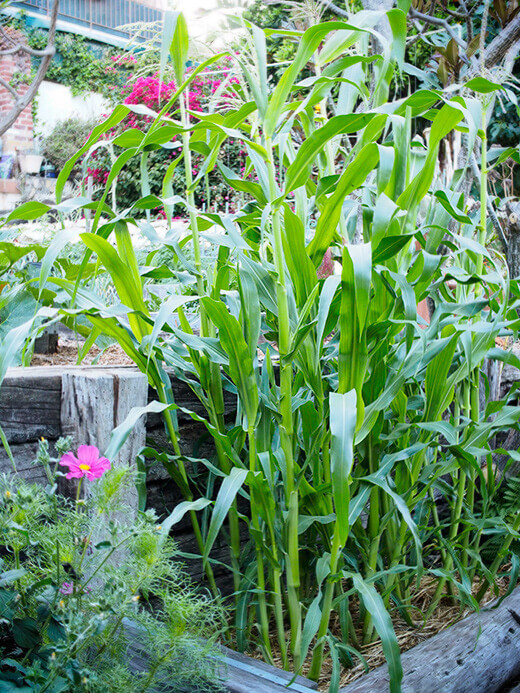

In late spring, the first flowers started to bloom on my corn, turning from a pale green to a rich violet. These tiny explosions of flowers are called tassels. Tassels are the male flowers on the plant, and they pollinate the silks (female flowers) on the ears.
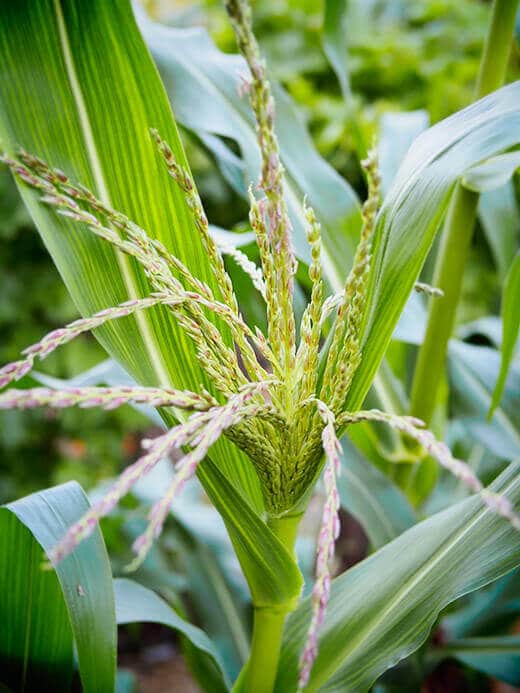
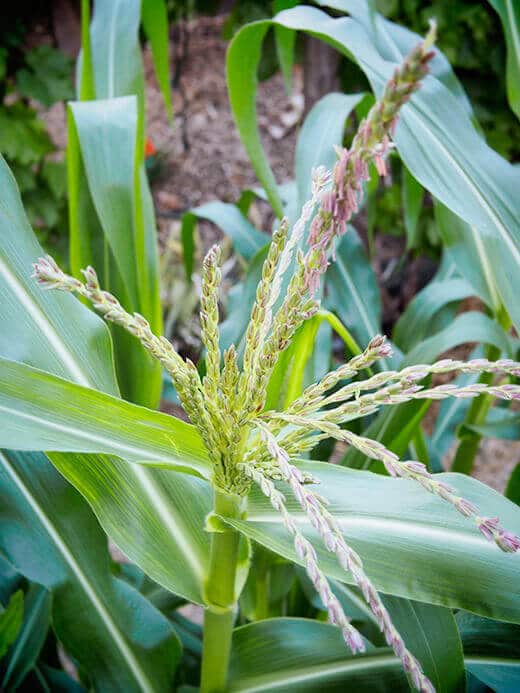
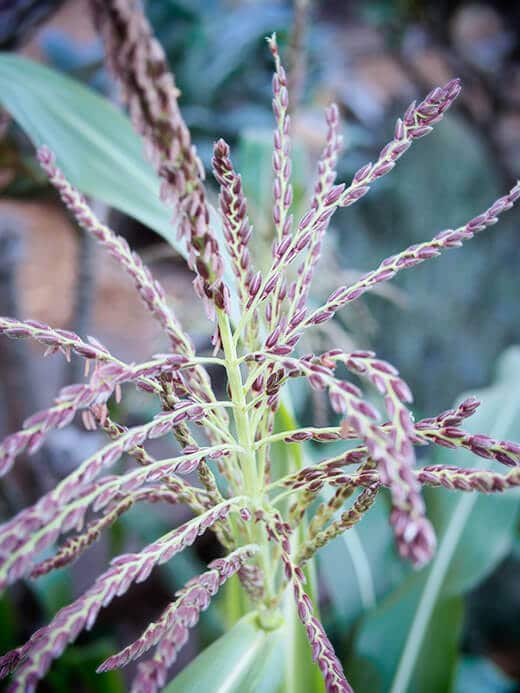
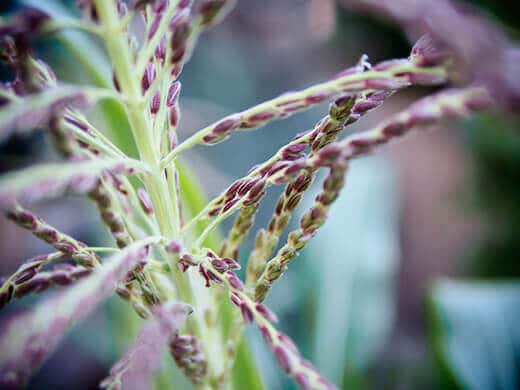
For every silk that’s pollinated, it turns into a juicy kernel. Good pollination results in large ears that are filled in well with plump kernels. My Golden Bantam 12-Row plants each bore 2 or 3 ears of corn, all of them at least 8 to 10 inches long with perfect rows of large yellow kernels.
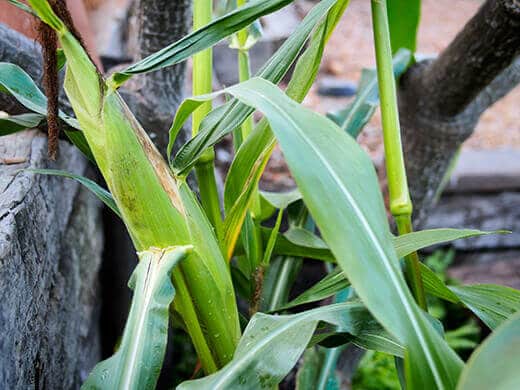
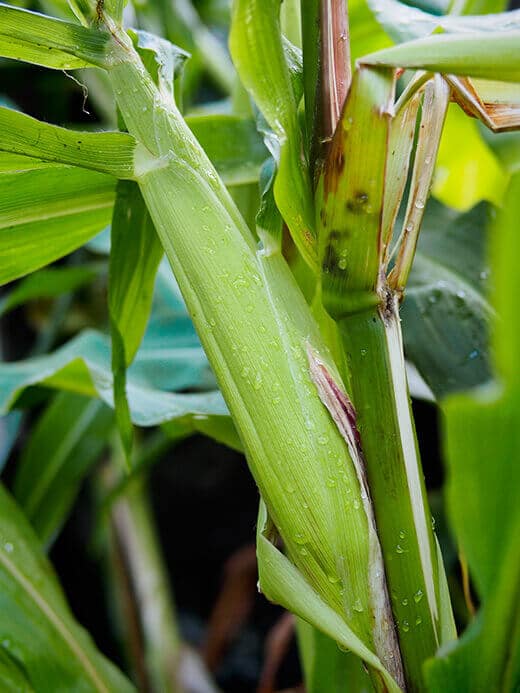
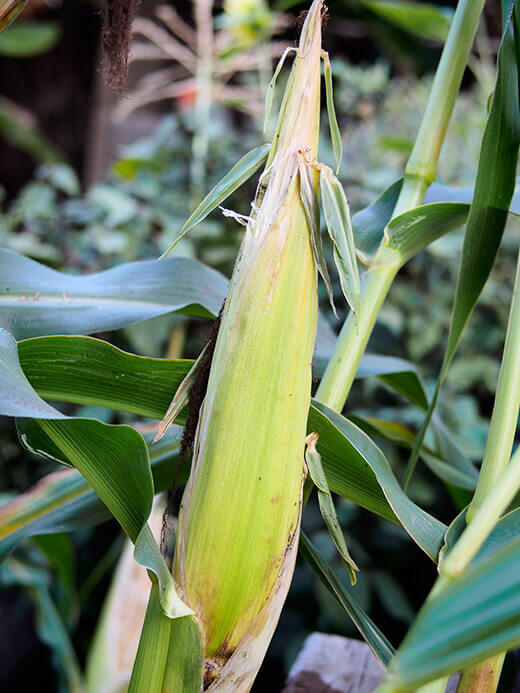
The corn was sweet, but not overly sweet. (I don’t think an heirloom corn could ever be as sweet as the hybrids you buy from the store, since those are specially bred to contain more sugar.) But this variety has a good balance of flavor and texture, and there’s nothing quite like freshly picked corn that goes from garden to grill in just a few minutes.
I picked a few ears too late, resulting in kernels that were slightly chewy, but they made for some excellent corn chowder. The rest of the ears were steamed on the grill (in their husks) and then buttered with one of my favorite compound butters, a zesty cilantro-lime that leaves festive little flecks of green on the cob!
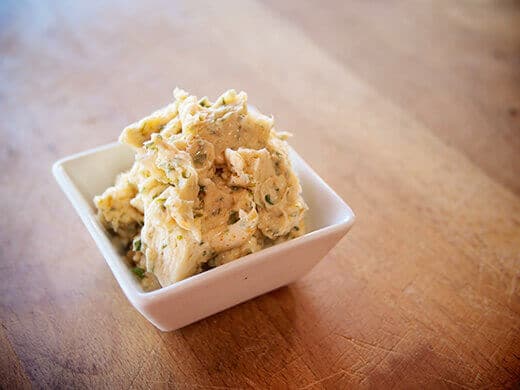
Cilantro-Lime Butter
Makes 1/2 cup
Ingredients:
1/2 cup butter, softened at room temperature
2 tablespoons minced cilantro leaves
1/4 teaspoon ground cayenne pepper
Juice and zest from 1/2 lime
Pinch of salt
Making Your Cilantro Lime Butter
In a small bowl, cut up the butter into small chunks. Add the cilantro, cayenne pepper, juice and zest, then fold it all in and mash with a spatula or fork until well combined.
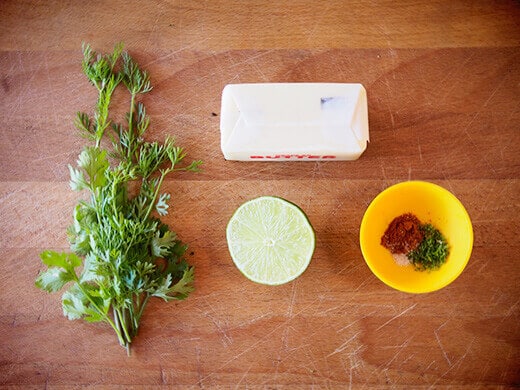
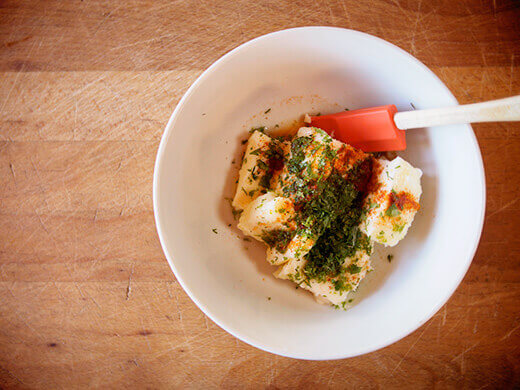
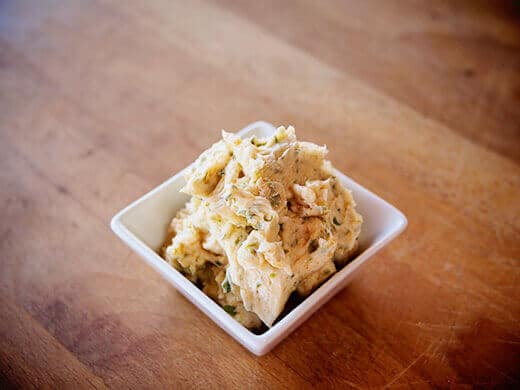
Slather the cilantro-lime butter over a cob of piping hot corn and rejoice! (You might even find yourself slathering it over other things too… try it with fish, shrimp, zucchini, and whatever else you’re grillin’ up that day.)
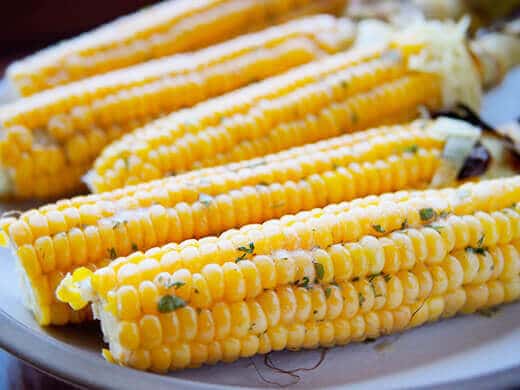
Golden Bantam Sweet Corn (With a Cilantro-Lime Butter Recipe!)
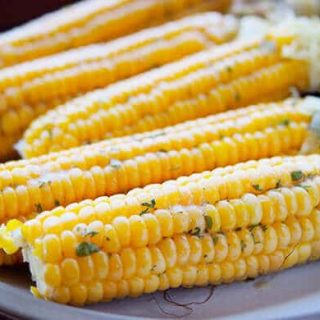
Corn ears were steamed on the grill (in their husks) and then buttered with one of my favorite compound butters, a zesty cilantro-lime that leaves festive little flecks of green on the cob!
Ingredients
- 1/2 cup butter, softened at room temperature
- 2 tablespoons minced cilantro leaves
- 1/4 teaspoon ground cayenne pepper
- Juice and zest from 1/2 lime
- Pinch of salt
Instructions
- In a small bowl, cut up the butter into small chunks
- Add the cilantro, cayenne pepper, juice and zest, then fold it all in and mash with a spatula or fork until well combined.
- Slather the cilantro-lime butter over a cob of piping hot corn and rejoice!
Recommended Products
As an Amazon Associate and member of other affiliate programs, I earn from qualifying purchases.


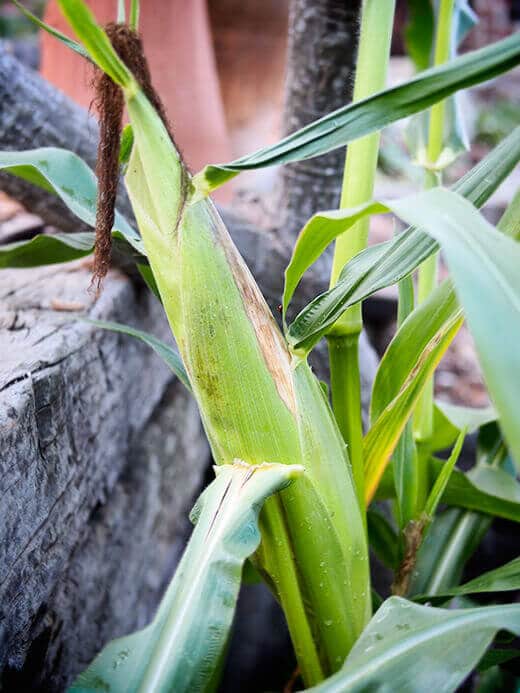















We live in zone 5b and have planted GB the last two years. This year’s crop was much healthier due to soil amendments, but we keep getting chewy corn. What are we doing wrong? How big should the ears be when ready?
Chewy corn means it was picked too early or too late. It took me a few tries to learn the proper time to pick my own corn, so I understand the frustration! But in general, wait for the silk to start to dry up (but not be completely dried and brown). Pull back the husk a little and examine the kernels, which should be plump and filled out. Pierce a fingernail into a kernel; if it oozes a milky substance, then it’s ready. If not, re-cover the corn with the husk, leave it for a couple more days, and then check again. The stalk usually only produces 1 or 2 large ears of corn, and maybe 1 or 2 small ears.
Chelli Somerton Regier liked this on Facebook.
We use creme fraiche & parm instead of butter MT @theGardenBetty: Golden Bantam Sweet Corn w/ Cilantro-Lime Butter! http://t.co/SFiVXTntzI
Have you harvested yours yet? Golden Bantam Sweet Corn (With a Cilantro-Lime Butter Recipe!) http://t.co/ITQtTPm9US #gardenchat #foodie
My crop grew to 10 feet tall! Golden Bantam Sweet Corn (With a Cilantro-Lime Butter Recipe!) http://t.co/cE2uz0hGOz #gardenchat #recipe
From garden to grill: Golden Bantam Sweet Corn (With a Cilantro-Lime Butter Recipe!) http://t.co/DQKJGXWO9a #gardenchat #gardening #foodie
Grow your own, no GMO needed: Golden Bantam Sweet Corn (With a Cilantro-Lime Butter Recipe!) http://t.co/vwLSaypliH #gardenchat #recipe
Probably the best corn post I’ve ever read 🙂 And I had no idea that preference was towards white kernals in the past…wasn’t it the same case with carrots?
Freshly picked and buttered up: Golden Bantam Sweet Corn (With a Cilantro-Lime Butter Recipe!) http://t.co/e09g73GPcH #gardenchat #foodie
Juicy, sweet and homegrown! Golden Bantam Sweet Corn (With a Cilantro-Lime Butter Recipe!) http://t.co/MskYr3Cw21 #gardenchat #foodie
Evette Garcia liked this on Facebook.
RT @theGardenBetty: An heirloom corn from @rareseeds: Golden Bantam Sweet Corn (With a Cilantro-Lime Butter Recipe!) http://t.co/pDBH3OUy6b…
An heirloom corn from @rareseeds: Golden Bantam Sweet Corn (With a Cilantro-Lime Butter Recipe!) http://t.co/pDBH3OUy6b #gardenchat #recipe
How do you save your corn seeds for next year’s planting?
I don’t, as I only grow 12-16 plants a season. Corn is highly susceptible to inbreeding depression, so you would need to grow 200+ plants in order to save strong, healthy seeds for future generations.
Charlie Bourgeois liked this on Facebook.
Lizz Yoakum Dukes liked this on Facebook.
Jodi Anderson liked this on Facebook.
Diana Heffernan-Schrader liked this on Facebook.
Savannah Zendejas liked this on Facebook.
Looks so good and ohhh I’m so jelly at ur garden. That too looks so awesome.
Golden Bantam Sweet Corn (With a Cilantro-Lime Butter Recipe!):
There’s an old saying about corn — “Knee-high… http://t.co/sRV2f7LK64
Blogged on Garden Betty: Golden Bantam Sweet Corn (With a Cilantro-Lime Butter Recipe!) http://t.co/QHNW5frcBR